To put it midly, these are interesting times for frogs, toads, salamanders and caecilians. On a global scale, amphibians are in decline. My own organization, NatureServe, was involved in an international effort to assess the state of amphibians and the news was not good. Nearly one-third (32%) of the world’s amphibian species are threatened, representing 1,896 species. By comparison, just 12% of all bird species and 23% of all mammal species are threatened. As many as 165 amphibian species may already be extinct. In Central America and other regions, frog species in particular are being devastated by the chytrid fungus. At the same time, La Selva as a site plays hosts to impressive amphibian diversity and as a biological station has a long history of amphibian research. So it seemed appropriate to direct one of my independent research projects while at La Selva to some investigation into frogs, these gems of species, this "charismatic microfauna."
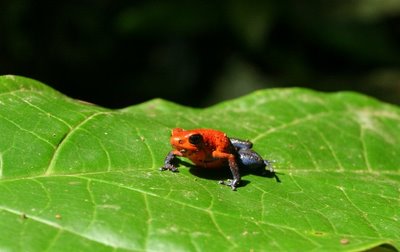
I interested another student, Anna from the University of Indiana, in the idea of studying
Dendrobates Pumilio, one of the poison dart frogs.
D. Pumilio is a wonderous species: besides the beautiful red and blue coloring, they exibhibit interesting reproductive behavior. Males establish territories and call females to them with a distinctive “eh eh eh eh eh eh” sound. Males actively defend their territory against males of the same species first by issuing an “encounter” call distinctive from the mating call and, if the intruder isn’t deterred, engage in physical combat. The resident male usually wins the battle and the territory is his. After mating with a male, the females lay eggs in the forest leaf litter. Males have been shown to guard the eggs until they hatch, afterwhich one of the parents will carry each tadpole on its back to a separate bromeliad plant high in the tree canopy. At this point, female returns daily to lay unfertilized eggs as food for the growing tadpole.
Anna and I decided to conduct an experimental study on the communication mechanisms of
D. Pumilio, auditory, visual and behavioral. Our species was easy to find at La Selva as males continuously announce their presence in form of mating calls and of course distinctive coloration makes both males and females relatively easy to spot. As part of the territory defense, we hypothesized that males would respond first to the sound of a competitive male intruder, then to its image and finally to signs of aggressive behavior. Seems pretty intuitive, sure, but this is OTS and we only have a few days to design, execute analyze and present our study. To test our bold idea, we needed to separate these communication mechanisms and compare them individually and in various combinations. Our plan was to choose an actively calling male and present him with one of these combinations of simulated sound, image and interactive behavior and measure his responses.
For sound, we started with recordings of the mating call of a few sample males and an encounter call we downloaded from the web, combining them into a single hour long recording. Ours would be a frog with endurance. Lacking a better playback device, we took a course laptop in a plastic bag with us into the field (shhhh!). For image, fortune smiled upon us: another study was going on at La Selva into bird predation on our same species and that team gave us some clay models that gave a pretty good visual impression of a single individual. And finally for behavior, we used a small mirror, the idea being if the sound and image pulled a resident frog in, we could observe the frog interacting with its own dynamic image. We conducted a total of 14 different tests of around 15 min each with various combinations of image, sound and the mirror and measured responses from the resident male.
The first thing we learned is that frog habitat makes for excellent mosquito habitat: we donated a lot of blood while trying to stand still for 15 minutes at a time. That aside, our much basic hypothesis seemed to be valid. The most successful configuration in terms of generating responses was that of sound combined with image followed by sound alone. In one particularly exciting instance involving both sound and image, the resident male approached the model and circled within a few centimeters many times, returned the (more aggressive) encounter call, and seemed “puff” itself up by standing taller on its front legs when approaching our clay model. Our sample size was too small and results to varied for our study to be taken seriously, but it helped us develop an interesting protocol on which a more complete study could be based.
Finally, we found a cool program on the web that proported to provide semantic translate
D. Pumilio calls. We ran some our recordings through the program and found an interesting section in which the translation came out as this: “eh eh eh eh, eh eh eh eh ... Rooooxane. You don’t have to put on the red light….” That joke might not work well here on my blog, but it killed in our final presentation to the course.
Here's a female crawling around on Anna's shirt. Don't worry, their poison is only toxic to small preditors.
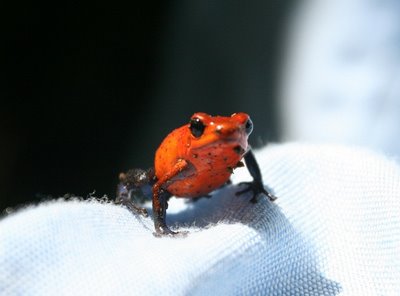
This was a delightful project because our subject was so engaging. It was all made bittersweet by the knowledge that this species, like so many frogs, may not be long for this world.
Labels: Ecoinformatics, Healthy Planet

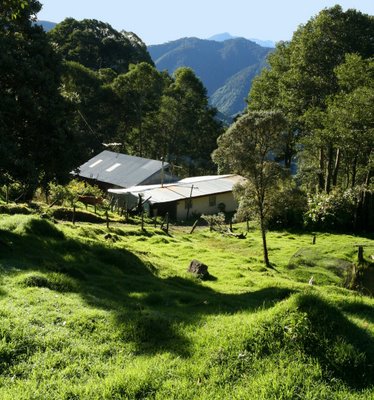
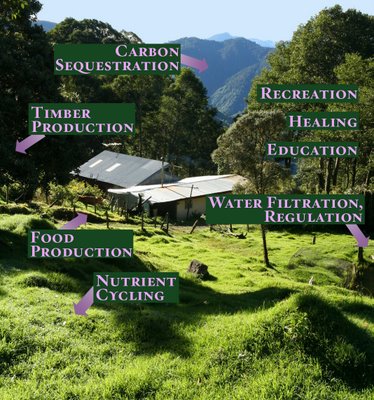


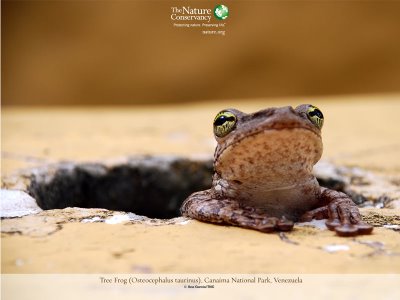
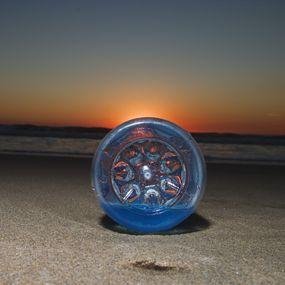

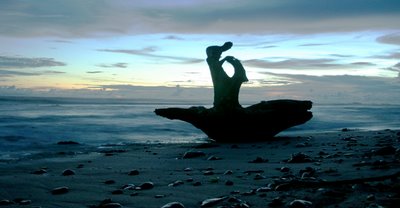

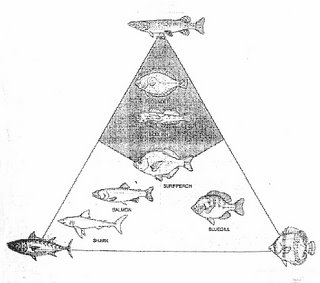
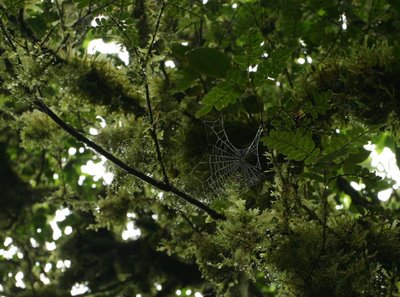

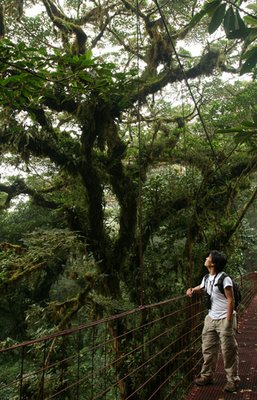
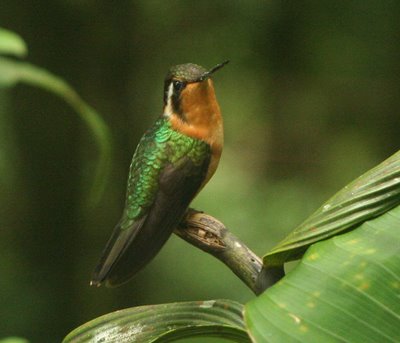
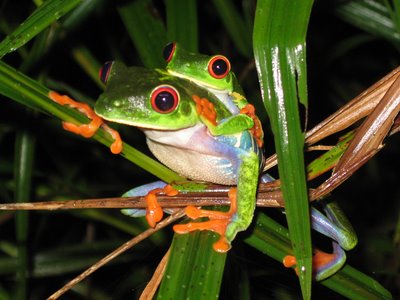
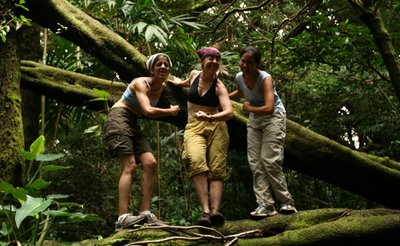
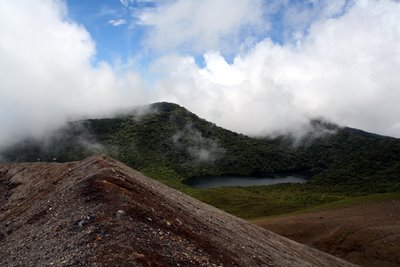
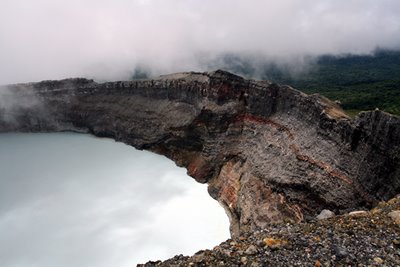
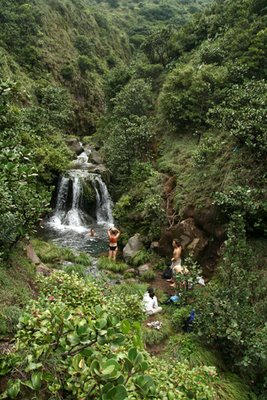
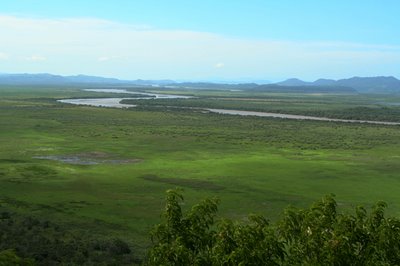
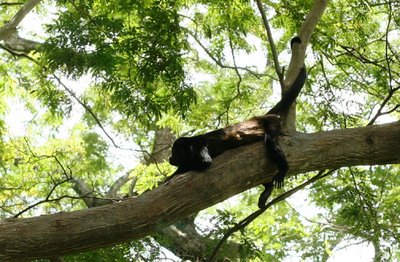
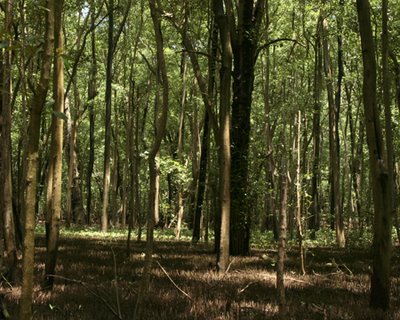
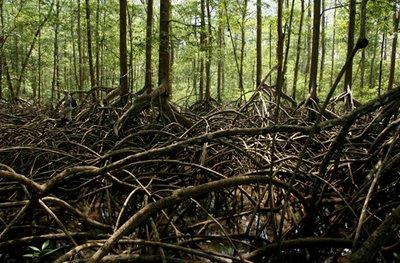
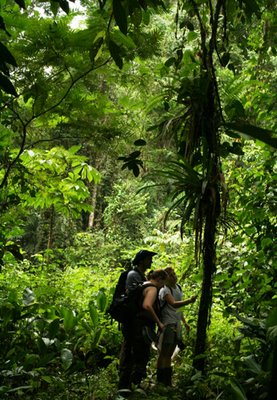

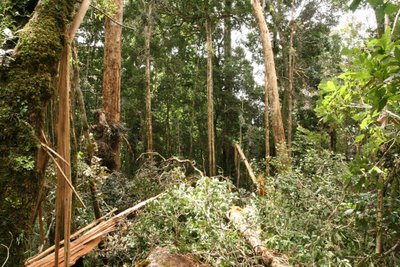
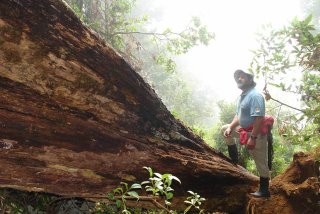
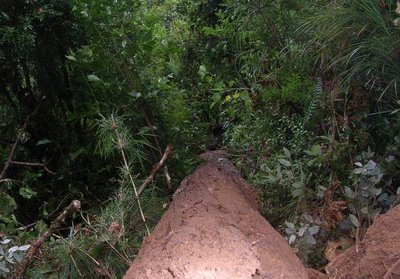
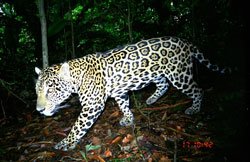
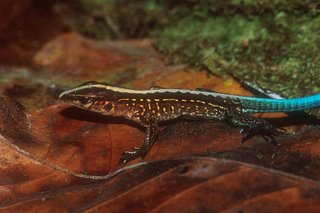
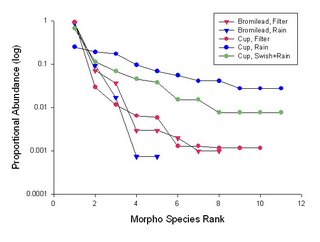
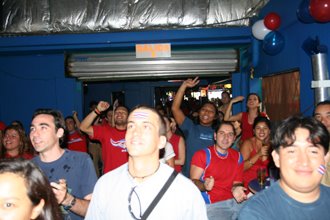



1 Comments:
Sounds really cool, Kristin. National Geographic just did an article about Santiago. I like your Blog site, very nicely done. Sounds like you are doing well. If you ever pass through Chicago look me up. Mark K.
Post a Comment Hide comments